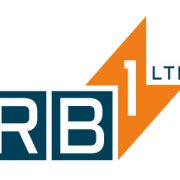How Does an Electrical Bypass Improve Energy Efficiency in Industrial Plants?
For industrial plants across the UK, energy efficiency isn’t just about saving money—it’s about staying competitive, reducing carbon emissions, and complying with strict sustainability targets. While many businesses invest in efficient machinery and renewable energy, one often-overlooked solution is the electrical bypass system.
At RB1, we specialise in electrical bypass solutions that not only improve system resilience but also contribute to more efficient energy use across industrial operations.
Why Energy Efficiency Matters in UK Industry
Industrial plants are among the UK’s highest energy consumers. Rising energy prices and government commitments to Net Zero by 2050 mean manufacturers must find new ways to reduce consumption without sacrificing productivity.
Electrical bypasses can help by:
- Reducing downtime-related waste
- Supporting safer, more efficient maintenance
- Allowing facilities to optimise power distribution
How Electrical Bypasses Improve Energy Efficiency
1. Minimising Downtime Losses
Every minute of downtime costs energy. Machines may restart inefficiently, processes may halt mid-cycle, and additional power may be wasted.
- A bypass ensures continuous power supply, preventing energy-hungry restarts and production waste.
2. Optimised Power Flow
Bypasses allow energy to be rerouted around components or circuits under maintenance, keeping other systems running efficiently.
- Instead of shutting down an entire plant for servicing, only specific areas are isolated.
- This targeted isolation saves significant amounts of energy compared to complete shutdowns.
3. Supporting Predictive Maintenance
Modern bypasses can integrate with IoT monitoring and energy management systems.
- This enables predictive maintenance, which reduces the risk of inefficient energy use caused by failing components.
- Well-maintained systems operate at peak efficiency, lowering energy waste.
4. Protecting Sensitive Equipment
Sudden outages or surges can damage motors, drives, and sensitive electronics. Damaged equipment often runs less efficiently—or fails entirely.
- Electrical bypasses provide a smooth, controlled switch of power, reducing the risk of damaging surges and extending equipment lifespan.
5. Enabling Renewable Integration
As UK manufacturers adopt solar, wind, and battery storage, bypasses are increasingly important.
- They allow facilities to switch between renewable sources and the grid without interrupting operations.
- This maximises the use of renewables, improving both sustainability and energy efficiency.
Real-World Example: Manufacturing Efficiency
Consider a UK manufacturing plant that schedules routine maintenance every quarter. Without an electrical bypass, the facility would need to shut down major systems, leading to wasted energy from restarting equipment and production losses.
With a bypass in place:
- Only targeted circuits are isolated.
- The rest of the plant continues operating efficiently.
- Energy savings accumulate over time, reducing costs and carbon emissions.
FAQs: Electrical Bypasses and Energy Efficiency
Q1: Do bypasses directly reduce electricity bills?
A1: Yes—by reducing downtime, preventing energy waste during restarts, and enabling more efficient maintenance, bypasses can lower overall energy consumption.
Q2: Can bypasses help achieve sustainability goals?
A2: Absolutely. By supporting renewables and lowering wasted energy, bypasses contribute to Net Zero targets in UK industry.
Q3: Are energy-efficient bypasses compliant with UK standards?
A3: Yes. At RB1, all bypass solutions comply with BS EN 61439 and UK safety regulations, while also improving operational efficiency.
Conclusion
Electrical bypasses are more than just a tool for power continuity—they are a smart investment in energy efficiency. By reducing downtime, protecting equipment, and enabling renewable integration, they help UK industrial plants save money and cut carbon emissions.
At RB1, we provide tailored bypass solutions designed to support both operational performance and sustainability goals.
Contact our team today to discuss how an electrical bypass could improve your facility’s energy efficiency.
